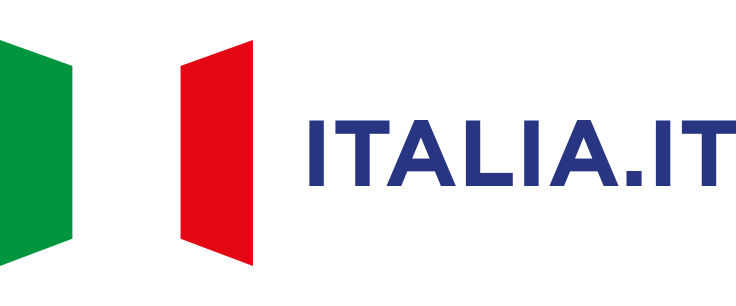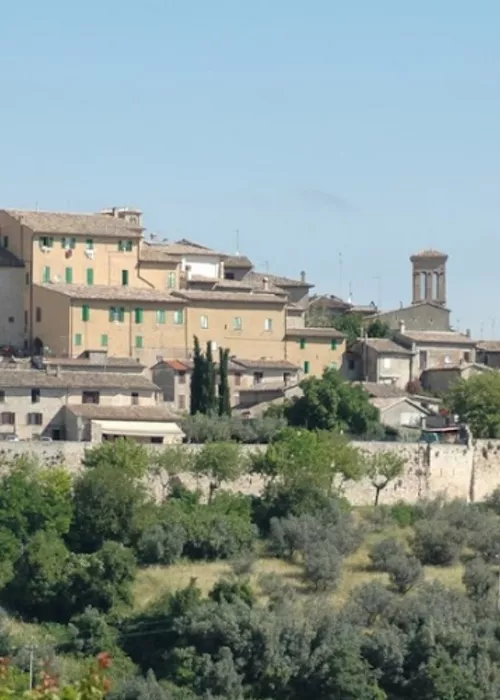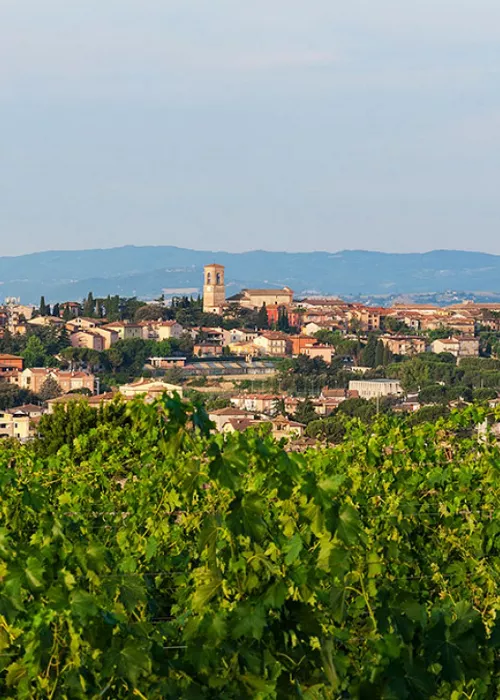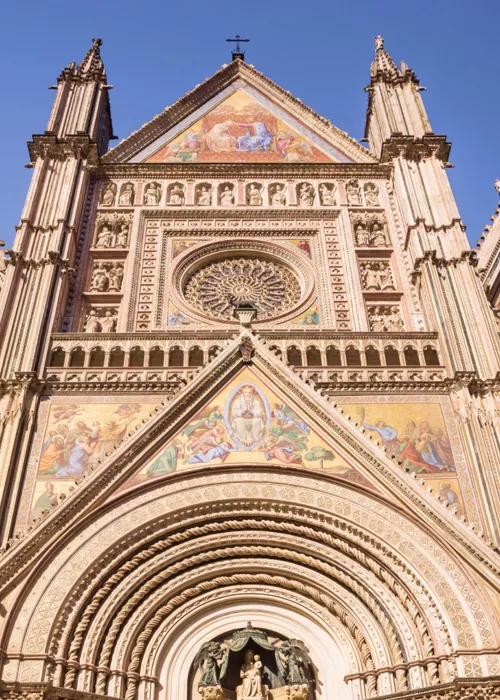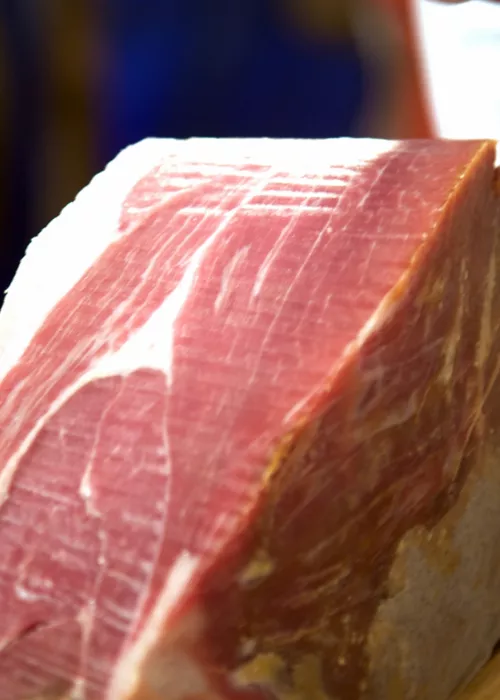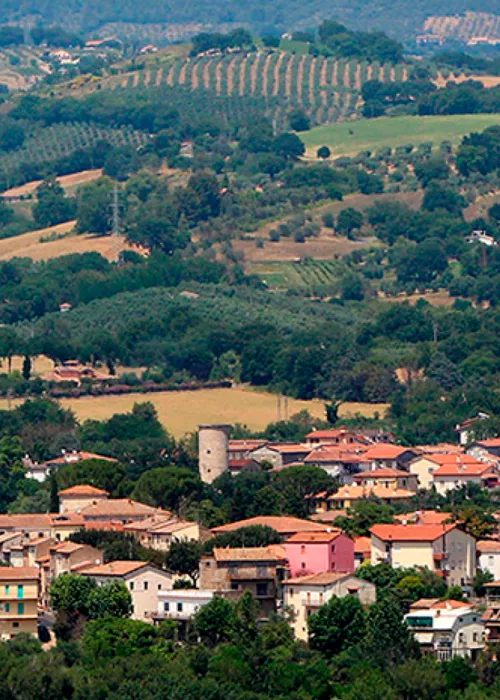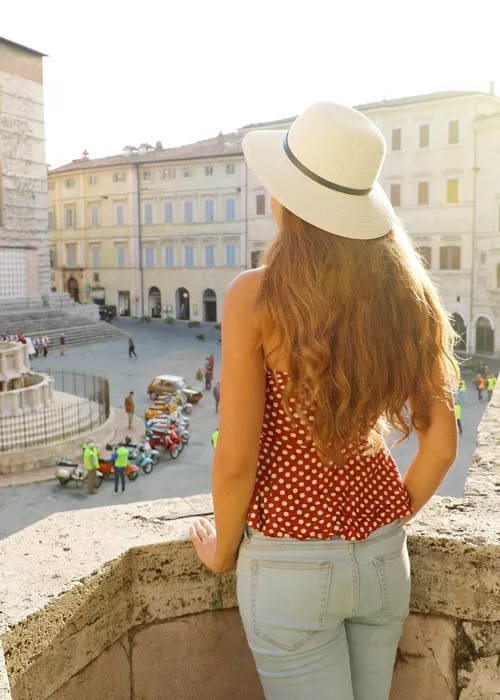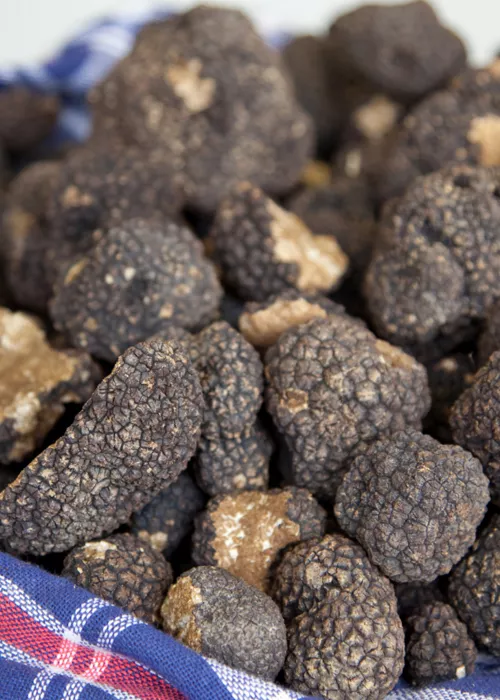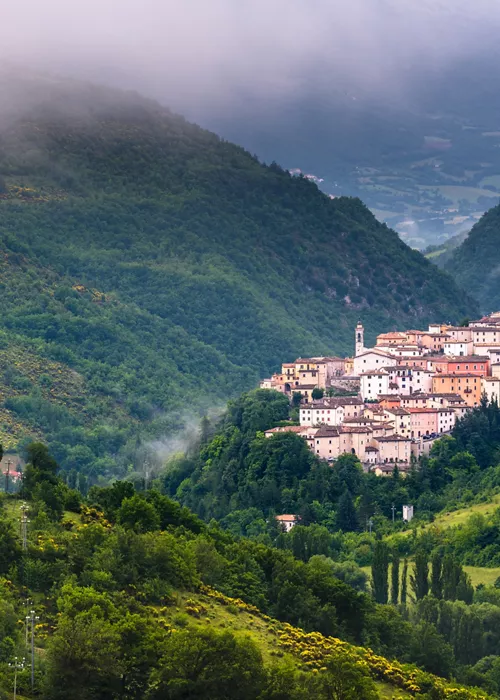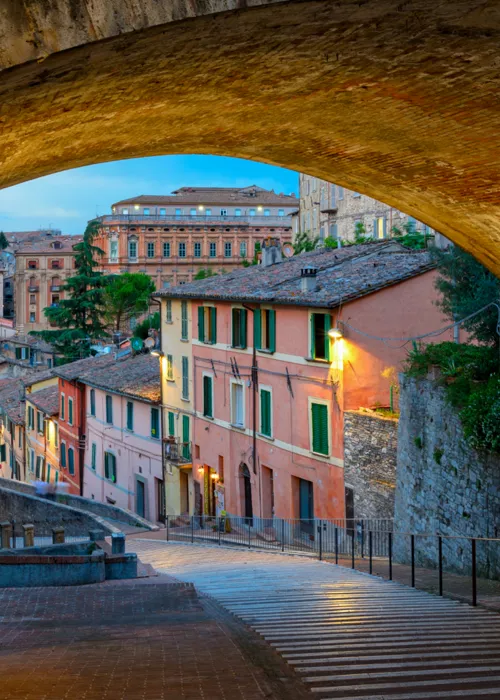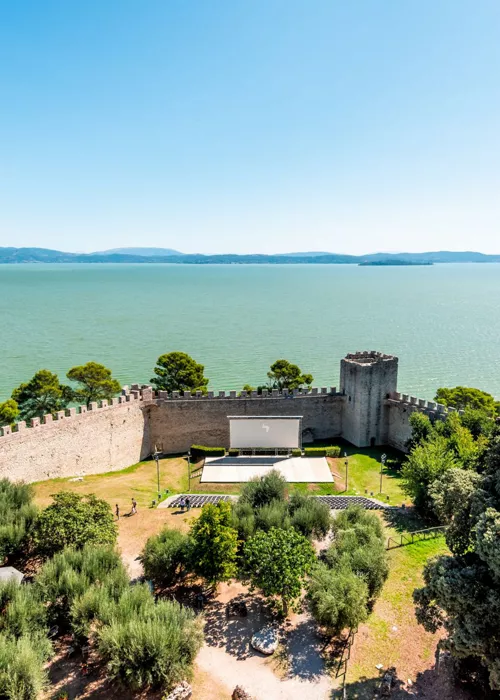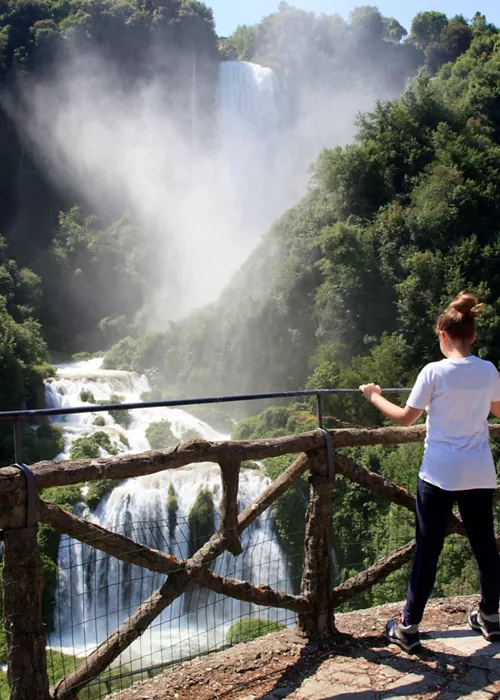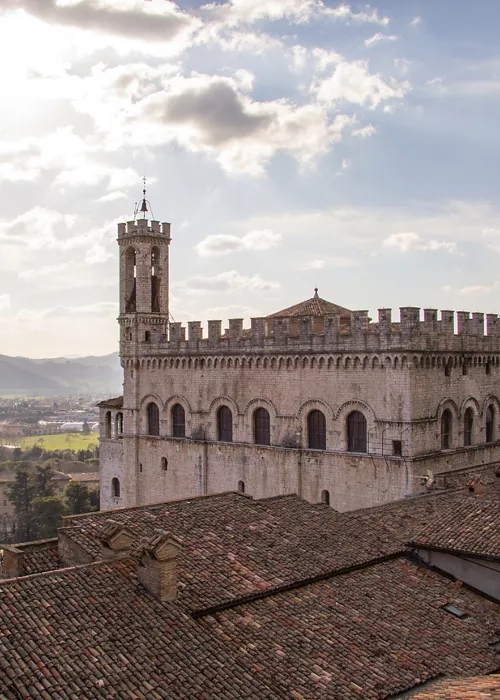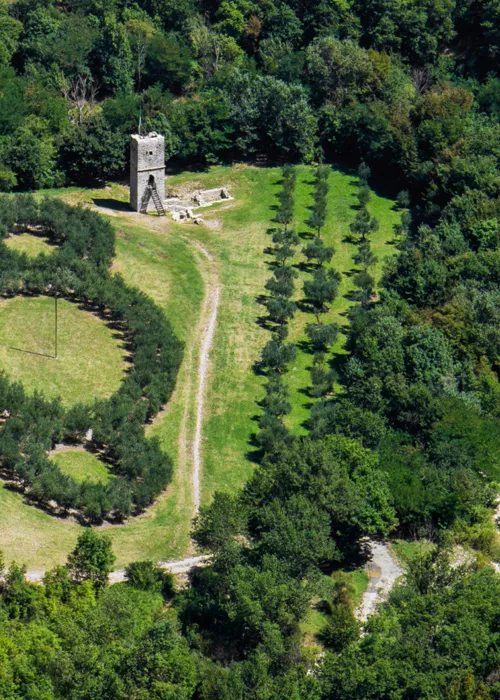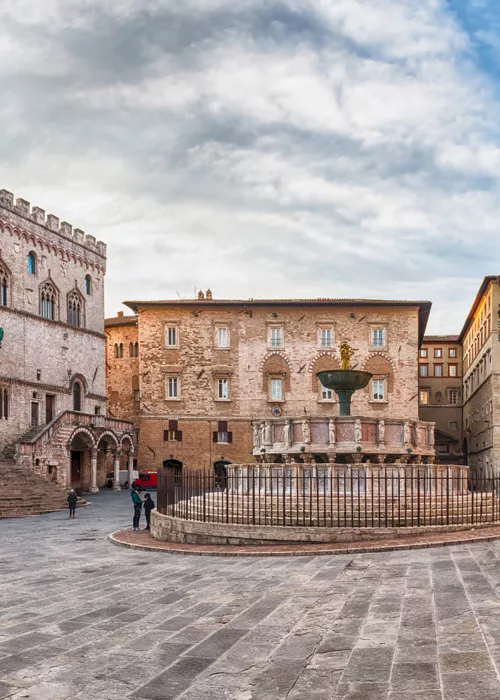Enotour in Umbria
7 minutes

Umbria, a region of hidden beauty where every stone tells a thousand-year-old story and every village is immersed in greenery. A cradle of great artists, undoubtedly appreciated for its art cities like Orvieto and Assisi, as well as Gubbio and Spoleto, Umbria is also a land of authentic flavours. From excellent olive oil production to prized truffles, as well as cured meats, cheeses, and many other local delicacies, Italy’s green heart can also boast a millennia-old bond with wine, to be discovered while strolling through over 13,000 hectares of vineyards and visiting the wineries of the Movimento Turismo del Vino in the region. Tastings, artisan workshops, lunches and dinners among the vineyards and many other outdoor activities await you, for a wine world experience in the company of the winemakers.
Montefalco: the realm of Sagrantino

The wine tour through Umbria begins east of Perugia, in charming Montefalco, a medieval gem known as “the balcony of Umbria” thanks to its breathtaking views of the surrounding hills. This is the first stop to discover Montefalco Sagrantino DOCG, a solemn wine that was originally sweet but has been refined into a dry version with barrel ageing over the centuries. It is now recognised as one of the most complex and fascinating red wines in Italy. At the start of the tasting, this wine offers an intense, almost impenetrable nose, evolving from forest fruits to chocolate, black pepper, liquorice, and a pleasant eucalyptus balsamic note. The complexity continues on the palate with powerful tannins, a pleasing acidity, and a persistent finish—offering a sip that perfectly balances strength and elegance.
Montefalco Sagrantino is a traditional wine expressing the mysterious charm of its native land: from the Renaissance frescoes in the Church of Sant’Agostino to the works of Perugino and other major artists in the Civic Museum. You can also enjoy a walk along the ancient walls and the Via del Sagrantino, which winds through the peaceful Umbrian countryside. Nearby, don’t miss Assisi, a medieval town surrounded by ancient walls and dominated by the majestic Basilica of San Francesco, adorned with frescoes by Giotto and Cimabue, and the nearby Temple of Minerva—a revitalising stop among the peaceful woods and places of prayer. These are just a few of the cultural visits in and around Montefalco. For nature lovers and sports enthusiasts, there are also walking and cycling routes along the path connecting Assisi to Spoleto. Discover the area through activities organised by the Movimento Turismo del Vino, including art workshops among the vines, guided visits to historical sites, and winery tours featuring statues and works of art embellishing the vineyards.
Torgiano Rosso Riserva DOCG: the Umbrian soul of Sangiovese

The wine tour in Umbria continues towards Perugia, passing beneath the Etruscan Arch - one of the most striking entrances to the town. Begin your walk through the historic centre, heading to Piazza IV Novembre and its attractions such as the Cathedral of San Lorenzo, the Fontana Maggiore, and the Palazzo dei Priori with the National Gallery. Just south of the Umbrian capital, you’ll find endless hills adorned with vineyards. This is the birthplace of Torgiano, the region’s first DOCG designation in chronological order, specifically in its Riserva version. The wine takes its name from the ancient town of Torgiano, known since Roman times as a “castrum”, a fortified military camp in a strategic location.
In Torgiano, the connection with wine has ancient roots: this fertile land harbours a winemaking tradition built around Sangiovese, often blended with Merlot and Cabernet Sauvignon. This blend produces a red wine that is complex and intoxicating on the nose, with notes of plum jam and blackberries intertwined with hints of pepper, tobacco, leather and sweet spices from long wood ageing. On the palate, it offers a full-bodied sip, balanced by a streak of acidity—just as captivating as a walk through the streets of Torgiano. From the baroque interiors of Palazzo Graziani-Baglioni to the watchtower, symbol of the town, you can then visit the Wine Museum and the Olive Oil Museum, which house important exhibits of this deeply rooted tradition.
Wine tourism at the Movimento Turismo del Vino wineries is an experience of taste and culture, but also of great fun for enthusiasts and their families. Enjoy visits to educational farms, immersive nature trails including treasure hunts and vineyard treks, as well as moments of relaxation with poolside aperitifs, vertical tastings of old and new vintages to discover the region’s great wines, and dinners alongside the winemakers for a sunset meal among the vines.
The wines of Trasimeno

The itinerary continues along the shores of Lake Trasimeno, passing through Castiglione del Lago, Panicale, Passignano sul Trasimeno, and other charming villages overlooking the lake, where vineyards line the vast hills surrounding the basin. The representative denomination of this area is Colli del Trasimeno DOC, which includes a range of grape varieties characteristic of the territory. The star of the region is Trasimeno Gamay which, despite the name, has nothing to do with the French varietal. It is actually the Spanish Grenacha, which has a fascinating story of migration and adaptation to this land. It’s likely this grape was introduced to central Italy during Spanish rule in the Kingdom of Naples and was mistakenly identified as Gamay—a name that has remained in local tradition. This grape is the pride of the region, perfectly suited to the microclimate, producing elegant, fresh wines that still make a bold impression on the palate. The nose offers layered red berry fruit with hints of sweet spices like cinnamon and, in some cases, notes of undergrowth. On the palate, its body and smooth tannins combine with good acidity, offering a persistent and balanced finish, making it ideal for ageing. This denomination also offers pleasant surprises with Vinsanto DOC Colli del Trasimeno, an ancient production now carried on by only a few producers. Made with Trebbiano and Malvasia grapes left to dry on racks, then fermented in small barrels for up to ten years, it develops a classic bouquet of syrupy apricot, caramel, and ethereal notes.
This corner of Umbria offers exceptional tastings with Movimento Turismo del Vino producers, paired with local specialities, especially torta al testo: a traditional unleavened Umbrian flatbread cooked on a round iron plate known as a “testo”. Beyond tastings, there is a world to discover within the MTV wineries, including truffle hunting routes, olive harvesting, horseback riding and cooking classes to learn the secrets of traditional recipes.To conclude this stop on Lake Trasimeno, a visit to Isola Maggiore is a must—the only inhabited island among the lake’s three.
Orvieto: between underground treasures and excellent wines

Suspended between sky and earth, Orvieto rises on a majestic tuff cliff in the green Umbrian countryside. A true architectural jewel, its centrepiece is the marvellous Gothic Cathedral, with frescoes by Signorelli. Below the surface lies a maze of caves and underground tunnels dating back to Etruscan times. In this almost dreamlike medieval setting, the Orvieto DOC is born—a denomination shared with Lazio, offering a wide variety of wines. From dry to sweet, including the renowned muffato, this appellation celebrates the blend of Trebbiano and Grechetto, two of the region’s most iconic white grapes. Wine production here dates back to the Etruscans, as evidenced by findings in the tuff caves once used for winemaking and storage. Over the centuries, Orvieto wine became a favourite of the popes and of great artists, who were often paid in wine for their works. In its basic version, the wine is savoury with notes of peach and yellow flowers, while in more complex versions, aromas of honey, dried fruit and a pleasant bitter finish emerge. The Orvieto DOC Muffato, made from grapes affected by noble rot, develops thanks to the influence of Lake Corbara. It offers a far more intricate aromatic profile: candied fruit, vanilla, saffron and a multitude of scents on the nose. On the palate, it is enveloping and silky, yet still retains its characteristic minerality.
The best way to explore this denomination in depth is through a guided tasting at a Movimento Turismo del Vino winery, followed by a lunch or dinner on site, featuring seasonal, local ingredients.For those seeking relaxation, a wine tasting in the jacuzzi is the perfect choice. Sportier visitors might enjoy a bike tour or a walk along the Via Francigena. For those wanting to dive into local flavours, there are tastings of extra virgin olive oils and cooking classes to learn traditional recipes told through the voices of local people.
To discover the wineries of Movimento Turismo del Vino Umbria, visit: https://movimentoturismovino.it/
